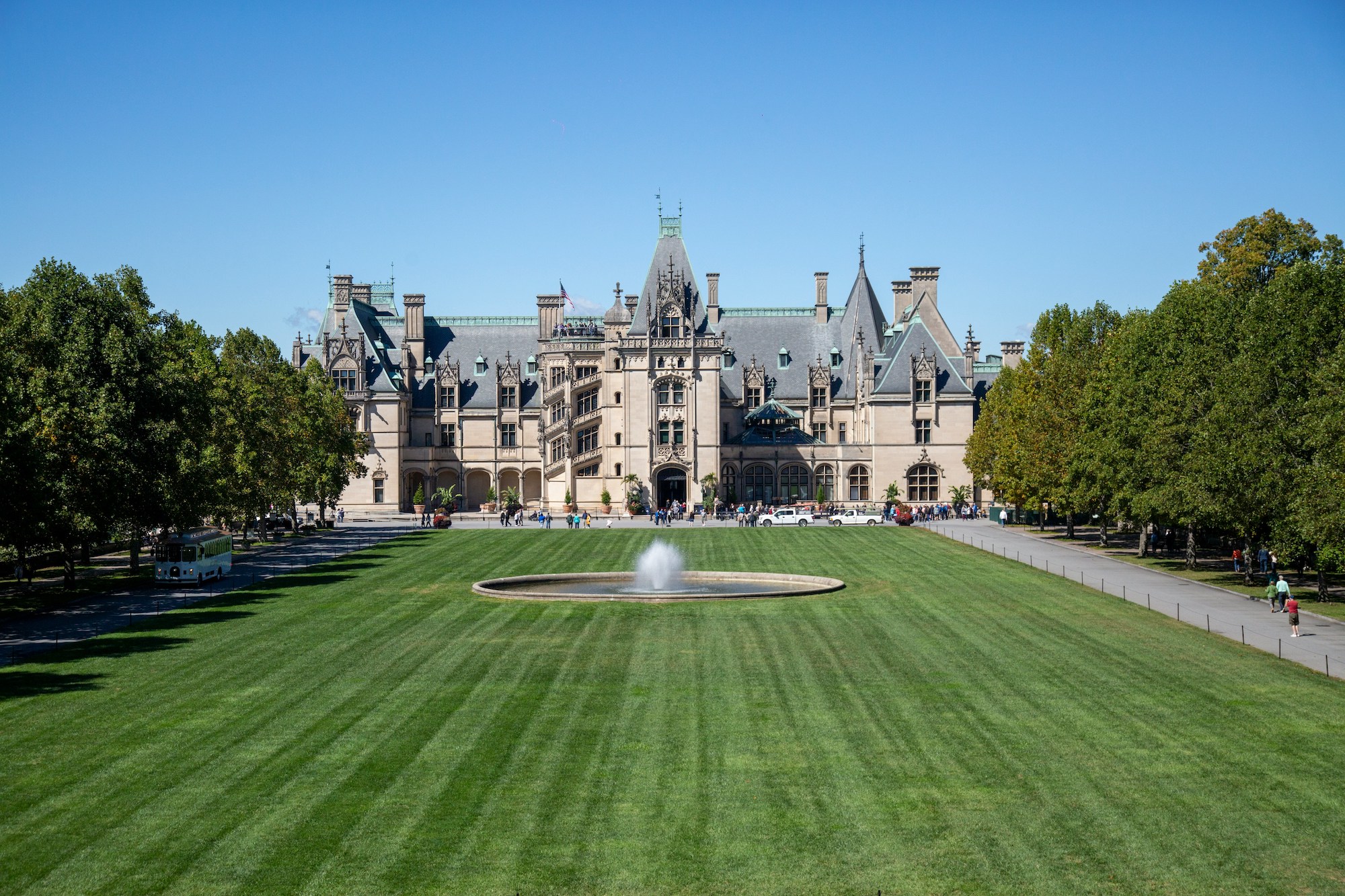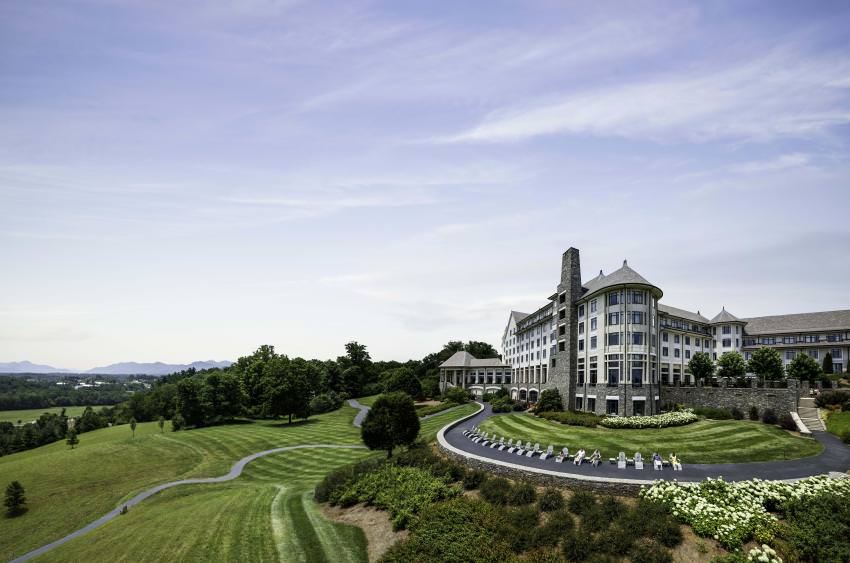The magnificent Biltmore Estate ranks among the defining relics of the Gilded Age and still stands as the biggest privately owned home in the U.S. Open to the public, this huge French Renaissance-style mansion and its sprawling, partly-gardened grounds are one of the top attractions in the vibrant Southern Appalachian mountain town of Asheville, North Carolina.
Here are some lesser-known facts and pieces of trivia about this grand architectural masterpiece!
1. Enduring Craftsmanship: More Than 1,000 Builders & 60 Stonemasons

The founder of the Biltmore Estate was George Washington Vanderbilt, a scion of the wealthy Vanderbilt family, which had prospered in rail and shipping enterprises among other endeavors in the 19th century. George W. Vanderbilt became entranced by Asheville during a summer visit in 1888, and set about acquiring land—some 125,000 acres altogether—in order to build a summer mansion there.
Construction on the Biltmore House—named after the Vanderbilt dynasty’s ancestral homeland of Bildt in the Netherlands and “moor,” referencing a swath of open ground—commenced in 1889. It wasn’t until Christmas Eve of 1895 that the ambitious, palatial, European-inspired structure was finally finished.
That multiyear construction mustered more than 1,000 builders and 60 stonemasons, and drew upon an on-site kiln—churning out some 33,000 bricks each day—and woodworking facility as well as a specially dedicated spur line of the Richmond & Danville Railroad for ferrying materials.
2. French Flair Embodies the Biltmore Estate

The Biltmore House’s design nods to Old World influences. George W. Vanderbilt and architect Richard Morris Hunt, whom Vanderbilt had recruited for the project, traveled extensively in Europe, and such French properties as Château de Blois, Château de Chantilly, and Château de Chambord served as direct inspiration for the Biltmore’s ultimate French Renaissance Revival architecture.
But some English manors, it should be noted, also helped shape Hunt’s plans for the Biltmore House, including Haddon Hall and Knole Palace.
3. The Biltmore Estate Was Ahead of Its Time

The Biltmore House featured a number of technological innovations that put it on the cutting edge of home construction in those closing years of the 19th century.
At a time when many Americans were still using gas lamps and candles for home lighting, for example, Biltmore’s 70,000-gallon heated indoor swimming pool boasted groundbreaking underwater lighting powered by direct current.
4. From Central Park to the Biltmore Estate: A Landscape Architects Legacy

Along with Richard Morris Hunt, George W. Vanderbilt enlisted the services of the best-known landscape architect in the country, Frederick Law Olmsted, to work on the Biltmore House project. Decades before, Olmsted and his partner Calvert Vaux won a design competition to create Central Park, the iconic greenspace in the heart of Manhattan in New York City.
Olmsted also helped design numerous other of America’s great urban parks and greenways, including Boston’s Emerald Necklace and Milwaukee, Wisconsin’s blufftop Lake Park.
Olmsted’s landscape design for the Biltmore Estate ranged from formal European-style gardens and artificial water features to the suggestion that Vanderbilt convert part of the property into a managed forest. (That Biltmore timberland came to be overseen by pioneering foresters Gifford Pinchot—later the inaugural director of the U.S. Forest Service—and Carl A. Schenk, and now is part of the Pisgah National Forest).
Among the most celebrated features of Olmsted’s vision for the Biltmore Estate is the three-mile-long Approach Road, which he schemed to be fronted by screening natural vegetation, thus heightening visitors’ anticipation of the mansion’s big reveal.
5. The Biltmore Estate Winery, A National Favorite

It was George W. Vanderbilt’s grandson, William A.V. Cecil, who envisioned a winery on the estate—appropriate enough, given the French château-style design.
Cecil planted grapevines on the grounds in 1971, but it wasn’t until he teamed with Frenchman Philippe Jourdain, the Biltmore’s first-ever wine master, that the Biltmore Estate Wine Company got off the ground. Occupying a historic structure that originally served as a barn for the Biltmore Dairy, the Biltmore Winery opened up officially in 1985.
Producing some 150,000 cases of vino a year and welcoming 650,000 visitors on an annual basis, the Biltmore Winery now ranks as the most-visited winery in the U.S.
6) The Biltmore Estate Comes Strung With Hidden Doors & Secret Corridors

The 178,000-square-foot Biltmore House contains some 250 rooms. And among its many interior partitions are more than a few hidden entrances and secret passageways, though often these were simply designed this way to conceal mundane household-running and entertaining logistics.
For example, a Renoir painting in the Breakfast Room, Child With an Orange, obscures a hidden entrance to the Butler’s Pantry. And a secret door in the Billiard Room afforded entry into the gentleman’s-only Smoking Room, a place where many a cigar was smoked and much brandy quaffed.
Visit the Biltmore Estate on Your Next Trip to Asheville, North Carolina

An unprecedented American abode when it was built back during the Gilded Age, the Biltmore House and its eye-catching grounds remain an all-out stunner of a property—a definite must-see landmark in lovely Asheville!




